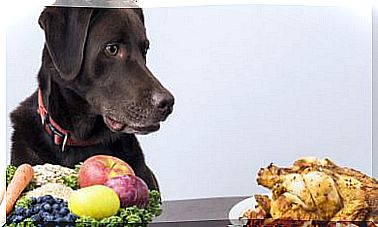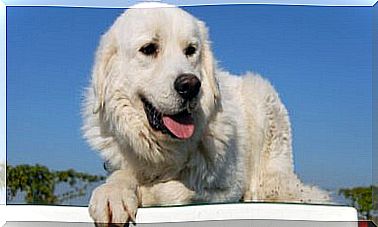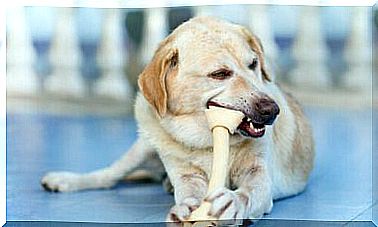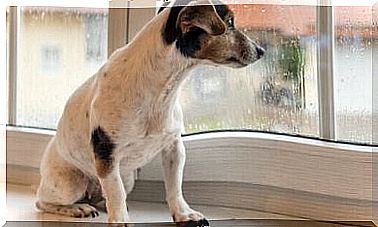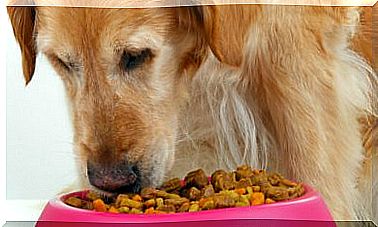Colon Cancer In Dogs: Causes And Symptoms
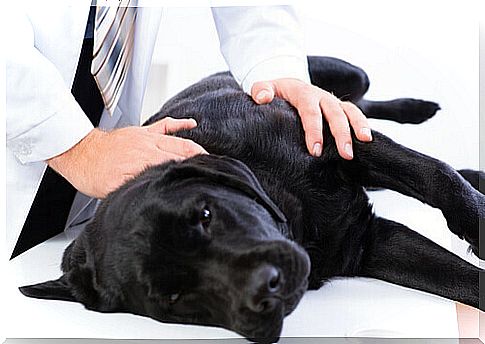
Colon cancer in dogs begins with the formation of benign polyps or tumors, called adenomas, that invade the area of the colon. The normal progression of these tumors is the development of cancer. For this reason, when they are found, it is usually chosen to have them surgically removed.
Tumors in the large intestine of the dog appear mainly in the distal part of the colon and rectum; they can be benign or malignant. Most polyps are benign, although the appearance of adenomas in the large intestine can predispose to the development of colon cancer.
Colon Cancer Symptoms in Dogs
Normally a series of tests are needed to detect this type of cancer because the animal, apart from digestive problems, could feel good emotionally and have a normal life.
Depending on how advanced the disease is, symptoms generally are frequent bowel movements and diarrhea, accompanied by blood and mucus. In addition, the animal will gradually lose weight and may suffer from digestive problems.
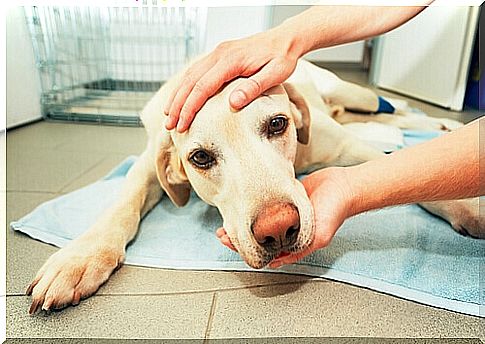
How is it identified?
If the dog is apparently okay, the vet will need to perform more general tests at first, then move on to more invasive tests such as endoscopy. Here is the complete process for diagnosing colon cancer in dogs:
- First of all, it will be necessary to carry out a blood test to check if the parameters are correct and if more organs of the digestive system are involved. It is normal to see signs of anemia in cases of colon cancer in dogs, which can be corrected with the proper treatment.
- Then we will proceed with a stool analysis, to rule out the presence of parasites that could cause frequent diarrhea or the appearance of blood in the stool.
- Ultrasound of the abdomen. This test is used to visualize the internal organs of the abdomen such as the kidneys, spleen, liver, bladder, prostate … Intestinal tract ultrasound can detect small masses that form on the organ wall and can be complicated if there are a lot of gases in the digestive tract, so sometimes other tests have to be done as well.
- X-rays of the chest and abdomen, to look for changes in organs or foreign bodies that may obstruct part of the intestine.
- Complete digestive endoscopy. It is a bit more invasive than the previous tests, but it is also a safe technique and the best way to view and collect tissue samples; digestive endoscopy is the most common technique for diagnosing colon cancer. It will be necessary to give the animal a complete anesthesia.
- Intestinal tissue biopsy. Typically, endoscopy machines have biopsy forceps to collect tissue samples or remove foreign bodies. Some devices also have handles for removing small polyps.
Once the samples of the suspected cancerous tissue are obtained, a specialist laboratory will carry out a detailed analysis that the veterinarian in the clinic will be able to interpret. Starting from this evaluation, it will be possible to follow the evolution of the disease and find the safest solution for the animal.
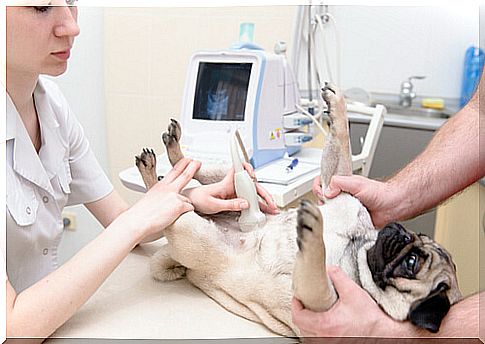
What Causes Colon Cancer in Dogs?
The cause of intestinal cancers is not entirely clear. Some factors that predispose to this type of cancer in dogs are diet and chronic inflammatory bowel diseases, such as colitis or gastritis.
As a prevention, it is recommended to offer the dog a quality diet, especially if he exhibits digestive problems on a regular basis. There are a lot of highly digestible foods that can alleviate these problems.
On the other hand, it is very important to take him to the vet often, especially if we observe digestive problems or significant weight loss in our pet. Identifying these types of diseases in time is sometimes vital so that the vet can offer us a favorable prognosis.
